B cell-helper neutrophils stimulate the diversification and production of immunoglobulin in the marginal zone of the spleen
- PMID: 22197976
- PMCID: PMC3262910
- DOI: 10.1038/ni.2194
B cell-helper neutrophils stimulate the diversification and production of immunoglobulin in the marginal zone of the spleen
Erratum in
- Nat Immunol. 2014 Feb;15(2):205
Abstract
Neutrophils use immunoglobulins to clear antigen, but their role in immunoglobulin production is unknown. Here we identified neutrophils around the marginal zone (MZ) of the spleen, a B cell area specialized in T cell-independent immunoglobulin responses to circulating antigen. Neutrophils colonized peri-MZ areas after postnatal mucosal colonization by microbes and enhanced their B cell-helper function after receiving reprogramming signals, including interleukin 10 (IL-10), from splenic sinusoidal endothelial cells. Splenic neutrophils induced immunoglobulin class switching, somatic hypermutation and antibody production by activating MZ B cells through a mechanism that involved the cytokines BAFF, APRIL and IL-21. Neutropenic patients had fewer and hypomutated MZ B cells and a lower abundance of preimmune immunoglobulins to T cell-independent antigens, which indicates that neutrophils generate an innate layer of antimicrobial immunoglobulin defense by interacting with MZ B cells.
Figures
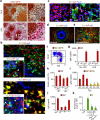
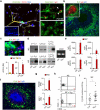
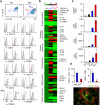
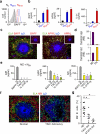

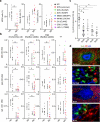

Comment in
-
A helping hand from neutrophils in T cell-independent antibody responses?Nat Immunol. 2012 Jan 19;13(2):111-3. doi: 10.1038/ni.2214. Nat Immunol. 2012. PMID: 22261958 No abstract available.
-
Antibody responses: Neutrophils zone in to help B cells.Nat Rev Immunol. 2012 Jan 20;12(2):73. doi: 10.1038/nri3159. Nat Rev Immunol. 2012. PMID: 22266690 No abstract available.
Similar articles
-
Marginal Zone B Cells Assist With Neutrophil Accumulation to Fight Against Systemic Staphylococcus aureus Infection.Front Immunol. 2021 May 10;12:636818. doi: 10.3389/fimmu.2021.636818. eCollection 2021. Front Immunol. 2021. PMID: 34040603 Free PMC article.
-
Innate lymphoid cells integrate stromal and immunological signals to enhance antibody production by splenic marginal zone B cells.Nat Immunol. 2014 Apr;15(4):354-364. doi: 10.1038/ni.2830. Epub 2014 Feb 23. Nat Immunol. 2014. PMID: 24562309 Free PMC article.
-
Class-switched marginal zone B cells in spleen have relatively low numbers of somatic mutations.Mol Immunol. 2011 Mar;48(6-7):874-82. doi: 10.1016/j.molimm.2010.12.020. Epub 2011 Jan 22. Mol Immunol. 2011. PMID: 21256598
-
The B cell helper side of neutrophils.J Leukoc Biol. 2013 Oct;94(4):677-82. doi: 10.1189/jlb.1112596. Epub 2013 Apr 29. J Leukoc Biol. 2013. PMID: 23630389 Free PMC article. Review.
-
DNA targets of AID evolutionary link between antibody somatic hypermutation and class switch recombination.Adv Immunol. 2009;101:163-89. doi: 10.1016/S0065-2776(08)01005-5. Adv Immunol. 2009. PMID: 19231595 Review.
Cited by
-
Neutrophil-T cell crosstalk and the control of the host inflammatory response.Immunol Rev. 2023 Mar;314(1):36-49. doi: 10.1111/imr.13162. Epub 2022 Nov 3. Immunol Rev. 2023. PMID: 36326214 Free PMC article. Review.
-
Neutrophil recruitment and function in health and inflammation.Nat Rev Immunol. 2013 Mar;13(3):159-75. doi: 10.1038/nri3399. Nat Rev Immunol. 2013. PMID: 23435331 Review.
-
Trafficking and retention of protein antigens across systems and immune cell types.Cell Mol Life Sci. 2022 May 3;79(5):275. doi: 10.1007/s00018-022-04303-4. Cell Mol Life Sci. 2022. PMID: 35505125 Free PMC article. Review.
-
Progranulin regulates the development and function of NKT2 cells through EZH2 and PLZF.Cell Death Differ. 2022 Oct;29(10):1901-1912. doi: 10.1038/s41418-022-00973-6. Epub 2022 Apr 21. Cell Death Differ. 2022. PMID: 35449211 Free PMC article.
-
Characterization of IL-10-producing neutrophils in cattle infected with Ostertagia ostertagi.Sci Rep. 2019 Dec 30;9(1):20292. doi: 10.1038/s41598-019-56824-x. Sci Rep. 2019. PMID: 31889109 Free PMC article.
References
-
- Nathan C. Neutrophils and immunity: challenges and opportunities. Nat. Rev. Immunol. 2006;6:173–182. - PubMed
-
- Soehnlein O. An elegant defense: how neutrophils shape the immune response. Trends Immunol. 2009;30:511–512. - PubMed
-
- Brinkmann V, et al. Neutrophil extracellular traps kill bacteria. Science. 2004;303:1532–1535. - PubMed
-
- Mantovani A, Cassatella MA, Costantini C, Jaillon S. Neutrophils in the activation and regulation of innate and adaptive immunity. Nat. Rev. Immunol. 2011;11:519–531. - PubMed
Publication types
MeSH terms
Substances
Grants and funding
- P51 RR00165/RR/NCRR NIH HHS/United States
- P01 096187/PHS HHS/United States
- U01 AI095613/AI/NIAID NIH HHS/United States
- P51 RR000165/RR/NCRR NIH HHS/United States
- P01 AI061093/AI/NIAID NIH HHS/United States
- U01 AI95613/AI/NIAID NIH HHS/United States
- R01 AI074378/AI/NIAID NIH HHS/United States
- P01 AI096187/AI/NIAID NIH HHS/United States
- P01 DK072201/DK/NIDDK NIH HHS/United States
- U19 AI096187/AI/NIAID NIH HHS/United States
- P01 AI61093/AI/NIAID NIH HHS/United States
- R01 AI057653/AI/NIAID NIH HHS/United States
LinkOut - more resources
Full Text Sources
Other Literature Sources
Molecular Biology Databases
Miscellaneous

